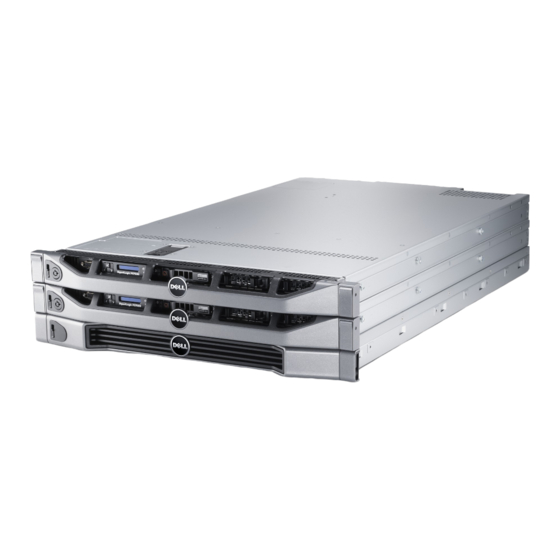Dell FS7500 Руководство - Страница 8
Просмотреть онлайн или скачать pdf Руководство для Хранение Dell FS7500. Dell FS7500 18 страниц. Equallogic best practices series network attached storage
Также для Dell FS7500: Обзор (7 страниц), Техническое руководство (22 страниц), Настройка оборудования (2 страниц)

Dell EqualLogic FS7500 – Unified block and file storage for virtual workloads
As storage I/O requests are received, the hypervisor either leverages the storage subsystem drivers or
the network subsystem drivers to establish and maintain a connection to the datastore. In the case of
3
block-based storage, the hypervisor uses the storage Host Bus adapter
(HBA) driver to connect to the
block-based SAN storage device. This may be iSCSI HBAs, Fibre Channel HBAs, or even Converged
Network Adapters running FCoE.
In file-based storage environments, the hypervisor leverages the Network Interface Card (NIC) driver
because the storage traffic flows over the IP network. Traffic destined for the NAS device is processed
by the NFS client in the hypervisor, and then sent over the IP network where it is handled by the NAS
device.
Other differences also exist between the two VMware I/O stacks. As we noted above, in a block-based
storage environment, the hypervisor formats the raw storage device with the VMFS file system. NAS-
based datastores are not formatted by the hypervisor; instead they are managed entirely by the NAS
device. This means the NAS device maintains the formatting, and ultimately controls the maximum size
of the volumes presented to the ESXi hosts. While VMFS is limited to 2TB per volume in vSphere 4.x,
and 64TB per volume in vSphere 5, the Dell EqualLogic FS7500 may enable you to exceed these
boundaries to provide substantially more contiguous space than block-based solutions. At present, the
EqualLogic FS7500 has been tested with volumes up to 509TB in size.
The Dell EqualLogic FS7500 storage solution for VMware
The Dell EqualLogic FS7500 is a unified, scale-out NAS solution that works with EqualLogic PS Series
arrays to combine both NAS and SAN storage in a single, flexible architecture designed to optimize both
performance and capacity. While many storage solutions tend to experience performance degradations
as you increase their capacity, the FS7500 offers almost linear scalability; that is, as you increase the
number of controller pairs or EqualLogic PS Series arrays, the FS7500 delivers a proportional increase in
storage performance. This is a key feature because consolidating virtual workloads can cause
unexpected demand bursts in your storage capacity and performance. The scalability of performance
with capacity eases this common stumbling block.
The FS7500 system can be quickly added to an existing EqualLogic SAN environment to create a NAS
service. Because workloads in virtual environments can be deployed or moved quickly to meet business
needs, it is not uncommon to experience high volatility in storage demand. As a result, the ability to
add or move NAS or SAN storage quickly and easily, without disrupting operations, is a great
advantage—especially as more and more applications are virtualized.
3
Assuming a hardware initiator is used for FC/iSCSI/FCoE block access.
Page 6
